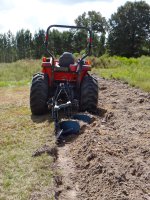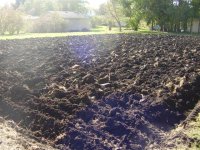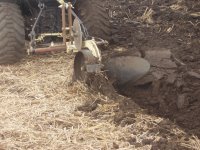rossn
Silver Member
Hello,
I am plowing an area for the first time, in high clay content soil. I haven't plowed previously, so this is a new experience for me. I have a Massey GC1705 and an Everything Attachments single bottom plow... though I'm not sure what size it is (awful **** heavy!).
What depth is ideal, and is it better to do a single or double pass?
Ideally I would be tilling in some compost, if I can get my hands on a tiller. Should I top dress the area with compost before plowing?
How close should I plow, row to row?
Any other recommendations?
Thanks!
I am plowing an area for the first time, in high clay content soil. I haven't plowed previously, so this is a new experience for me. I have a Massey GC1705 and an Everything Attachments single bottom plow... though I'm not sure what size it is (awful **** heavy!).
What depth is ideal, and is it better to do a single or double pass?
Ideally I would be tilling in some compost, if I can get my hands on a tiller. Should I top dress the area with compost before plowing?
How close should I plow, row to row?
Any other recommendations?
Thanks!


